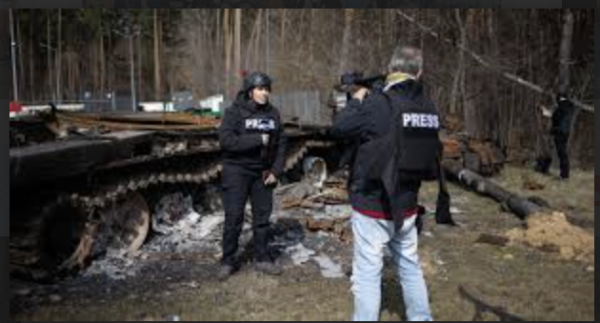Natalie’s News: White Fragility, Handle with Care
Race is often at the forefront of Oak Park’s collective consciousness. And for the most part, we don’t shy away from the issue. Our community consistently tries to have the difficult, uncomfortable conversations about race necessary to make strides toward racial equity.
But how do we ensure these conversations are productive and respectful? When we discuss race, do we make an effort to listen as much as we talk?
In Oak Park, many white people have a tendency to discuss race without pausing for breath, let alone listening to the perspectives of people of color.
This leads to an outlook and discussion on race distressingly one-sided.
Our conversations can’t lead to concrete change if white people are the only ones whose point of view is being heard.
An example of this issue is an online Wednesday Journal letter to the editor published Dec. 19, “Achievement gap can’t be fixed with a Black Lives Matter sign.” With 37 comments, many of them over 300 words, residents of Oak Park and River Forest had a lot to say in response.
The op-ed was written by black parent Sharhonda Knott-Dawson. Knott-Dawson discussed the role of racism in District 97’s racial achievement gap and struggles liberal communities like Oak Park have in addressing their own racism.
She also brought up the role of white fragility in racism in Oak Park: “White fragility makes it difficult to discuss solutions to racism because of white people’s inability to name and identify their personal racism.”
White fragility is “a state in which even a minimum amount of racial stress becomes intolerable (for white people), triggering a range of defensive moves” such as emotional responses like anger, guilt, becoming argumentative, or just being silent.
However, many people who commented on the article overlooked Knott-Dawson’s vital argument about white fragility. Instead, they seemed to exemplify her point in their anger, defensiveness, and urge to explain the achievement gap in terms other than race.
One commenter used an analogy comparing first and second string players in sports to the achievement gap. In his eyes, if athletes don’t get playing time it is because of their own failings; similarly, if minority students don’t succeed in school it is their own fault.
This article struck me as a gross instance of white people being hard-headed in regards to race. White fragility hindered what could have been a thoughtful, reflective conversation about race in Oak Park.
A few months ago, my English teacher Brendan Lee gave our class a worksheet titled “Courageous Conversations About Race Protocol.” Lee said he uses this protocol because it “promotes racial equity through a research-based model. People can use it to have healthy, productive conversations instead of combative and unhealthy ones.”
Lee was introduced to this protocol a few years ago through diversity training with other OPRF teachers, when he read “What it Means to be White” by Robin DiAngelo.
“When I first started reading the book, I thought, ‘I’m from a working class background. My dad was an ironworker. My mom was a nurse. This is maybe geared towards white people who aren’t from a working class background,’” Lee said. “As a white man, I have this default to not want to engage in conversations about race. Racial equity work has inspired me to stay engaged in the conversation.”
Lee intends to continue to learn about race and his role in promoting equity. “To really reflect on whiteness requires you to step back and dig deep,” he said. “It’s not an easy process, it is a journey I’m still on. It’s continuous and necessary.”
In my class, Lee ensured our conversations on race were fruitful and introspective for every student.
Other OPRF teachers also emphasize the importance of a continuing dialogue about race in our country and community. When I took AP U.S. History with Tyrone Williams last year, I was struck by his focus on understanding and incorporating multiple perspectives in history: white, black, female and Native-Americans. “There’s a danger in ignoring race when discussing history because it’s the quintessential American experience,” he said. “My role as a teacher is to discuss power dynamics in our country and how history has created the minefield we currently traverse.”
Outside of his class, Williams advocates for the importance of a continuing dialogue about race and gender. “We can never stop talking, the power of communication is central to our ability to survive as human beings,” he said. “The day we stop engaging each other, even around the things we think we know a lot about, is the day we die as a species.”
Last week, the Martin Luther King Jr. assembly addressed the achievements of the civil rights icon and also explored the presence of racism in our community. After the event, as my class left the auditorium, whispered comments attacked the assembly. One white girl said “why was that whole thing just a hate on white people party?” I was struck by this remark because this girl had obviously missed the point of the assembly. There will always be people with that attitude, who remain deaf to any conversation they don’t want to hear. They might be difficult to reach, but what we can all do is focus on our own role in discussing race.
I have had moments where I’ve gotten extremely uncomfortable talking about race. I’ve thought “what’s the big deal?” when people of color have spoken out about cultural appropriation or microaggressions. I am working on my own white fragility to be a better ally, and I know I have a long way to go. As Lee said, this is a continuous discussion and journey.





